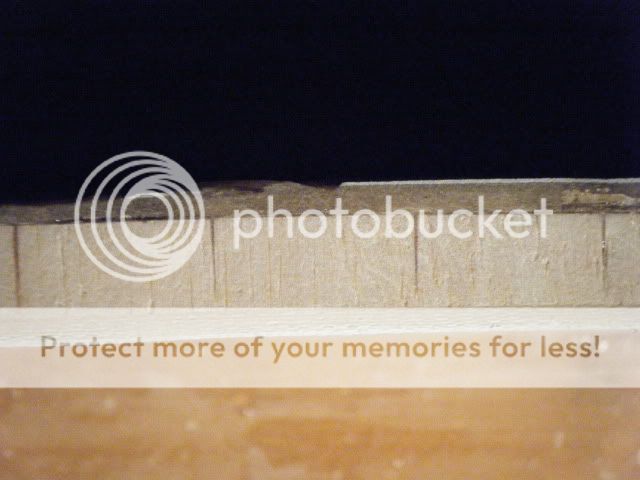I have undertaken a major restoration project on a powerboat. The entire foredeck is being recored using balsa. The bottom skins have been removed and the new core material bonded in. Any suggestions from those with experience for laminating the new glass to the underside of the new core? Vacuum bagging is out unfortunately. The glass schedule will be three layers of 1705 stitchmat and polyester laminating resin. I am looking for "tricks of the trade".
Deck recore from below
- Thread starter sandpiper10471
- Start date
- Status
- Not open for further replies.
Roll the fabric onto a cardboard tube. Use paint rollers to apply the resin. Have a helper. I did the inside of my Islander from the turn of the bilge to the cabin top and from bow to companion way by myself but I can also wallpaper ceilings.
Can't imagine doing that from below. Gravity can be your friend but in this case,...
I'll be interested to see the suggestions you receive.
I'll be interested to see the suggestions you receive.
good work!!
we did a similar job using plywood in my forepeak--was a backing plate for deck that is a part of the decking from under---was interesting job with many supporting bits of wood.
turned out perfect. we used 3/4 in ply wood with epoxy. then glass roving. etc....
wasnt easy but is a good way to do this kind of work.
we did a similar job using plywood in my forepeak--was a backing plate for deck that is a part of the decking from under---was interesting job with many supporting bits of wood.
turned out perfect. we used 3/4 in ply wood with epoxy. then glass roving. etc....
wasnt easy but is a good way to do this kind of work.
I've redone a foredeck, but the complexities of doing it upside down? Newton hates that, and I do too. I understand wanting to save the original "skin", but cutting it out at the nearest joint, scrapping all the wet undersides, building a form down below, and gluing the deck back on is my favorite. A man can lay a lot of glass and epoxy down, a heck of a lot easier than above.

When you have and outward flange with a moulded toerail and core going all the way to the toerail the top is not the best pick

On many older boats the inner skin is just that and inner skin with ZERO ability to support anything
On the other hand Jboats have a very thick inner skin with a very rigid inward flange that makes working from above a much more Possable fix
Interesting thread. Thanks tommays for the info and pics.
The UK magazine Practical Boat Owner had a great article on deck replacement. They went in from the top, carefully cutting out the deck panels along smooth areas into complete panels of nonskid, so that they could be reused and the joins filled, gelcoated and sanded.
Based on that, I think I would choose to do deck-recoring from the top whenever possible, but this thread has shown me that going from the underside is also feasible.
[edit] actually about 3 years ago, I augmented the underside of our cockpit with another layer of glass+epoxy, then some glassed-in wood bracing. I almost forgot that I've actually been there and dun dat
The UK magazine Practical Boat Owner had a great article on deck replacement. They went in from the top, carefully cutting out the deck panels along smooth areas into complete panels of nonskid, so that they could be reused and the joins filled, gelcoated and sanded.
Based on that, I think I would choose to do deck-recoring from the top whenever possible, but this thread has shown me that going from the underside is also feasible.
[edit] actually about 3 years ago, I augmented the underside of our cockpit with another layer of glass+epoxy, then some glassed-in wood bracing. I almost forgot that I've actually been there and dun dat
When doing glass work overhead, I've wet out glass on plastic sheeting, with help roll out in place overhead after brushing /rolling a small amount of resin in place first. After rolling carefully peel away plastic. Not easy but do-able.
Thanks for the replies so far. The only reason I am doing this job from underneath is because some incompetents had been hired several years ago to recore the foredeck but they hadn't solved the water infiltration problem. They had done the work from below, fixing the balsa to the top skin with contact cement then glassed the bottom skin with three layers of light cloth, probably 10 oz., with polyester and no mat. Thus, I felt the bottom skin was just too thin and weak to maintain the deck's shape had I cut out the top skin.
Some good suggestions so far. Keep the creative ideas coming.
Today on a small section we wet out three layers of stitchmat and supporting the centre on a square of cardboard covered in wax paper, tried squeegying it to the new core. Almost worked but not quite. We then used the same technique one sheet at a time and achieved success. While it worked, it was very time consuming and messy. Looking for ways to be more efficient and I may be doing this solo in a few days as my helper has to return to his real life.
Some good suggestions so far. Keep the creative ideas coming.
Today on a small section we wet out three layers of stitchmat and supporting the centre on a square of cardboard covered in wax paper, tried squeegying it to the new core. Almost worked but not quite. We then used the same technique one sheet at a time and achieved success. While it worked, it was very time consuming and messy. Looking for ways to be more efficient and I may be doing this solo in a few days as my helper has to return to his real life.
Ross and Tommays. Good ideas and great pics. A little more detail on the actual techniques you used, please. I don't quite have the methods planted in my little mind. Too many fumes?
Jeez guys, I sure hope that you're wearing good respirators when your messing with fiberglass resin. There's almost no fresh air getting into the forepeak of the bow from the inside & those fumes can be lethal. That's why I would work from the ouside. At least there's actually some oxygen to breathe. Think about your long term health, which I hope is more important to you then your boat. I say this because my Dad was a chemical engineer who died at 68 & lived with cancer for almost 10 years before it took him 3 years ago. My father had 10 patents for polyester resins with Allied Chemical & loved his job, but it cost him his life. Be careful with what your exposing yourself to.
UP from below
I used quarter inch plywood to make three forms( largest about about two foot by three foot) using the top skin for shape. These forms were used to press and hold the coring material and fibreglass, all bonded together at the same time, up against the top skin from below. Used small jacks and 2x2s to hold up and apply pressure to forms until cured. This method added time in making the forms but minimized the problems of fiberglass falling and gave me the feeling that all was chemically bonded in one application. Very pleased with the results.
I used quarter inch plywood to make three forms( largest about about two foot by three foot) using the top skin for shape. These forms were used to press and hold the coring material and fibreglass, all bonded together at the same time, up against the top skin from below. Used small jacks and 2x2s to hold up and apply pressure to forms until cured. This method added time in making the forms but minimized the problems of fiberglass falling and gave me the feeling that all was chemically bonded in one application. Very pleased with the results.
Here's a few pics and a description of the process I used. The largest was about a foot and a half by 3 feet. That was easier than these small ones. The limit to the working size of the patch is the pot life and open assembly time of your resin. Pre-assembley of the dry components with the clamp sticks and everything is pretty important.
http://taylorsmill.com/boatweb/Core Patch.htm
http://taylorsmill.com/boatweb/Core Patch.htm


Not sure if the fumes are worse than the dust BUT full protection was used one of the more important items was unventilated goggles when sanding and a full face shield when using resin

FULL ventilation was used at all times with suction and blowing fans along with about 100 pairs of gloves to prevent epoxy skin contact
I would hope anybody starting one of these jobs would bother to read the instructions on the materials they chose to use
Cut the piece of glass to size and shape. Starting from the wider end roll it onto a cardboard tube 3 inch is a good size. Generously apply resin to the area for the cloth. Unroll about a foot and with a wet paint roller push the cloth into the wet surface and be certain the edges are laying tight\. Slowly unroll the the cloth as you apply more resin. Roll from the center to the edges and don't pull the roller off the cloth near an edge. Continue until you are holding an empty tube. Then go to work with the grooved air roller and compact the cloth and work out the bubbles.
Was getting very frustrated with trying to get the glass to stick to the top skin. A number of responders indicate they have gone through the process but haven't indicated the fabric used. 1705 stitchmat weighs in at around 38 oz per sq. yd. That is a lot of weight but it is a fantastically strong material and removes the need for separate layers of chopped mat. However, since my helper left, I have met with much success. I have been working with 12 X 25 inch "tiles". staggering the joints. After wetting out a section, I hang it on the end of a piece of 12 inch plywood which is the correct length to be braced against the top skin in question. Then with a `13 inch drywall knife one side can be held against the deck surface while the other hand squeegies it all tight. Then attack the other side of the strip and remove the ply. I am finding it necessary to roll extra resin into the cloth and then squeegie again to remove air. The serrated roller works well when several layers are laminated on top of each other. It is now taking less than 10 minutes per tile and looking good. Of course it would be better to use larger sheets of glass but then the application would be far more difficult.
- Status
- Not open for further replies.






